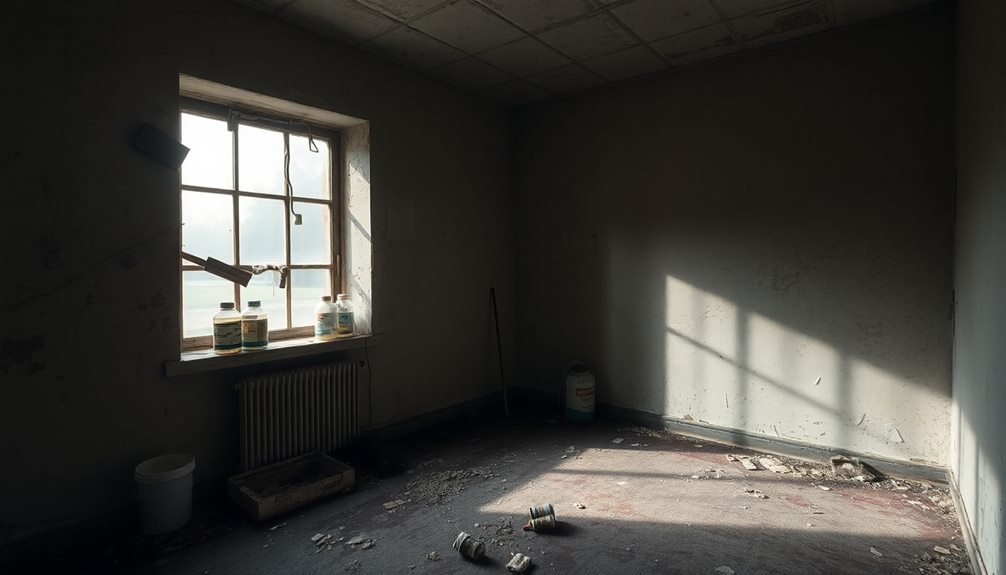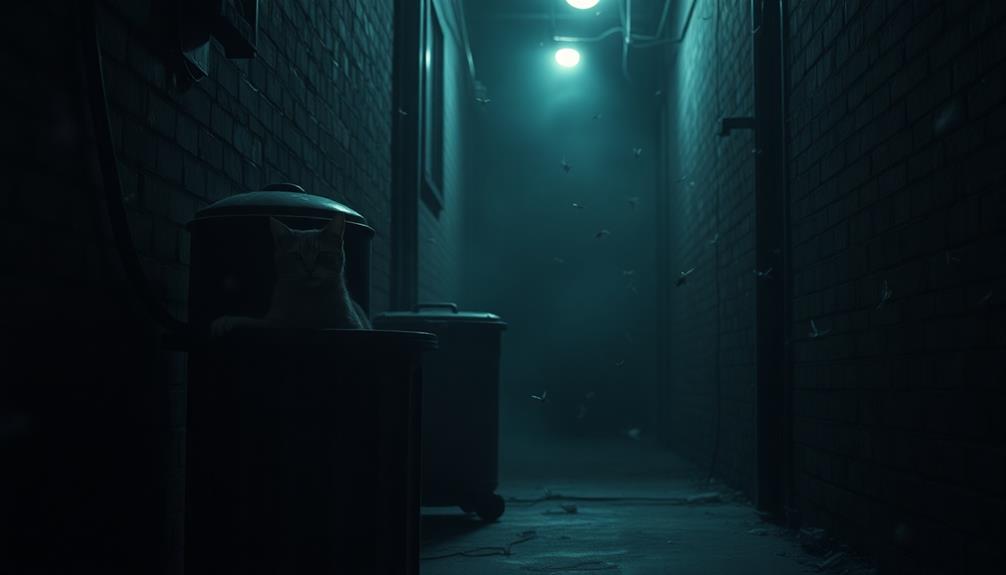A meth house smells really bad, like a mix of ammonia, cat urine, and burnt plastic. It can be overwhelming and might even make you feel sick. This awful scent comes from the toxic chemicals used to make meth. Think of rotten eggs blended with a strange sweetness—it's not pleasant at all! If you come across this smell, especially in a poorly ventilated space, it's a sign of danger nearby. Be alert and consider letting someone know because these houses can be unsafe. Want to find out more about how to spot a meth house? Keep exploring!
Key Takeaways
- A meth house emits a strong odor resembling a mix of ammonia, cat urine, and a sweet chemical undertone.
- The smell can also include notes of rotten eggs and burnt plastic, creating a pungent atmosphere.
- Lingering odors can permeate walls, carpets, and furniture, making detection difficult even after production ends.
- Exposure to these smells can cause physical discomfort, including headaches and respiratory issues, especially in children.
- Recognizing this distinct smell is crucial for community safety and should prompt immediate reporting to authorities.
Introduction
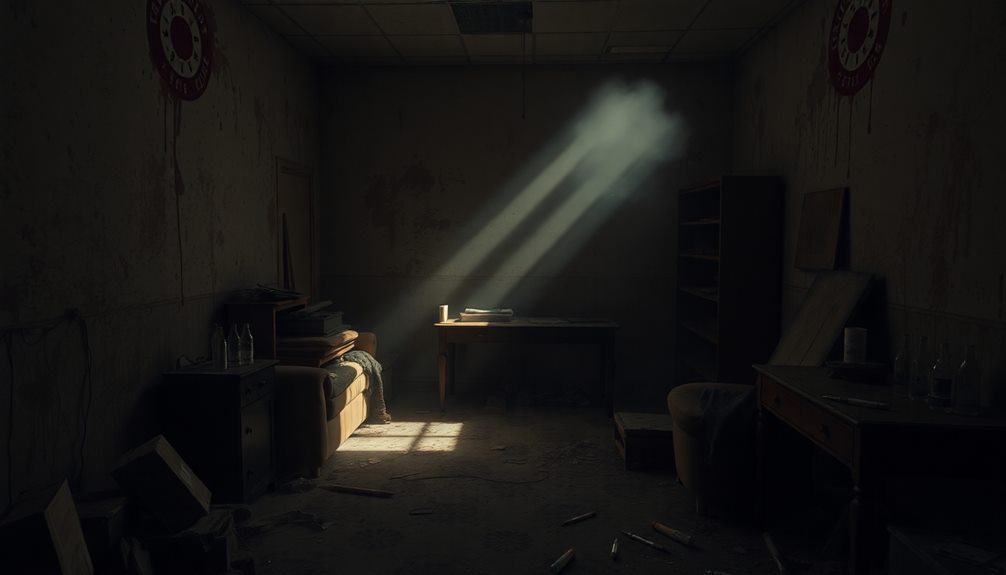
Meth houses often leave behind a distinct and unpleasant smell that can be a telltale sign of illegal drug activity. If you ever notice a strange odor wafting through your neighborhood, it's worth paying attention. This smell isn't just annoying; it can indicate serious problems happening nearby.
In some cases, these houses are used for cooking meth, which can create hazardous conditions for everyone around. The scent can linger in the air and cling to nearby surfaces, making it hard to ignore. You might find yourself wondering if it's coming from a nearby home or even a vehicle parked on the street.
Being aware of this smell is important, especially for your safety and the safety of those around you. If you think you've detected it, it's best to stay away and inform local authorities. They're trained to handle such situations and can ensure that any danger is managed properly.
In the chapters ahead, we'll dive deeper into what this smell is like and how to recognize it. Your awareness could help keep your community safe!
Description of the Smell

When you catch a whiff of the odor associated with a meth house, it's often described as a combination of ammonia and cat urine, with a chemical, almost sweet undertone. This smell can be incredibly overpowering, making you wrinkle your nose and step back.
Imagine walking into a room where the air feels thick and heavy, almost sticky, as if the smell clings to your clothes.
You might notice that it's not just one scent but a mix of unpleasant odors swirling together. Some say it's like rotten eggs or burnt plastic, adding to the confusion of what you're experiencing.
It's the kind of smell that can linger in your mind long after you leave, making you feel uneasy.
If you ever find yourself near a place that has this smell, you'll likely feel an instinctive urge to get away. Trust your senses! That strange, cloying odor is a warning sign that something's not right.
Being aware of this smell can help keep you safe, so it's important to recognize it when you encounter it. Stay alert, and remember: your nose knows!
Source and Composition
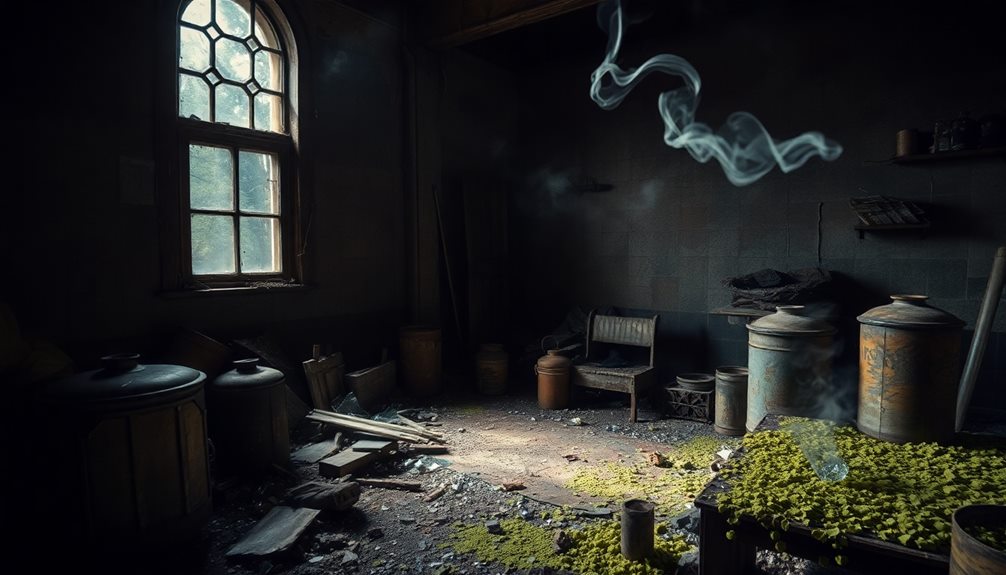
The source of the distinctive smell associated with a meth house stems from the various toxic chemicals used in the production of the drug.
When you think of meth production, imagine a mix of everyday substances, like cold medications, acetone, and even drain cleaners. These ingredients create a pungent odor that can be hard to forget.
As meth is cooked, volatile chemicals are released into the air. You might notice a strong, acrid smell, often compared to ammonia or cat urine. This smell can seep into walls, carpets, and furniture, making it linger long after the meth production has stopped.
It's not just unpleasant; it can also be dangerous. The chemical process of making meth generates harmful fumes that can irritate your eyes and throat.
If you ever catch a whiff of something off while walking by a house, it's essential to pay attention. The source of that smell can signal serious risks to health and safety.
Knowing what to look for can help keep you and your loved ones safe from the dangers lurking behind those closed doors. Stay informed, and trust your senses!
Typical Scenarios or Environments
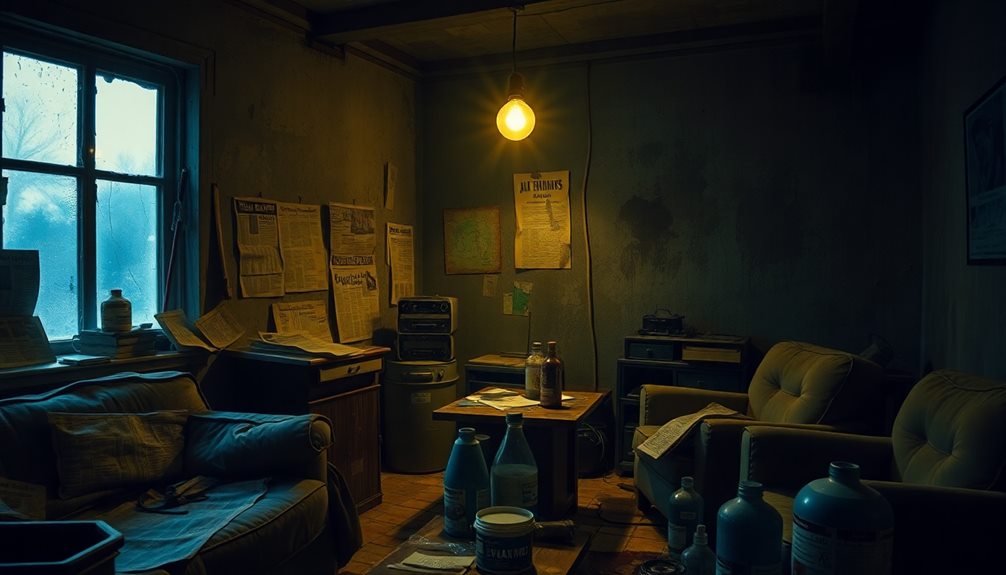
You might encounter the smell of a meth house in various settings, often in secluded or rural areas where privacy allows for clandestine activities.
Imagine driving down a quiet road, surrounded by trees and farmland, when suddenly you catch a whiff of something unusual. It's a sharp, chemical odor that seems out of place in nature.
You could also come across this smell in urban neighborhoods, where abandoned buildings or run-down houses provide cover for illegal operations.
Picture a dimly lit alley where the air feels heavy, and the scent hits you like a jolt. In these situations, the odor might mingle with other smells, making it harder to identify.
Sometimes, you might notice this smell lingering near a house that's been poorly ventilated.
The windows might be shut tight, and the curtains drawn, creating an eerie atmosphere.
If you're ever in these environments and detect that strong, acrid smell, it's a good idea to trust your instincts.
It's not just an unpleasant odor; it could signal a dangerous situation requiring immediate attention.
Always prioritize safety and alert the authorities if you suspect something's off.
Emotional or Cultural Associations
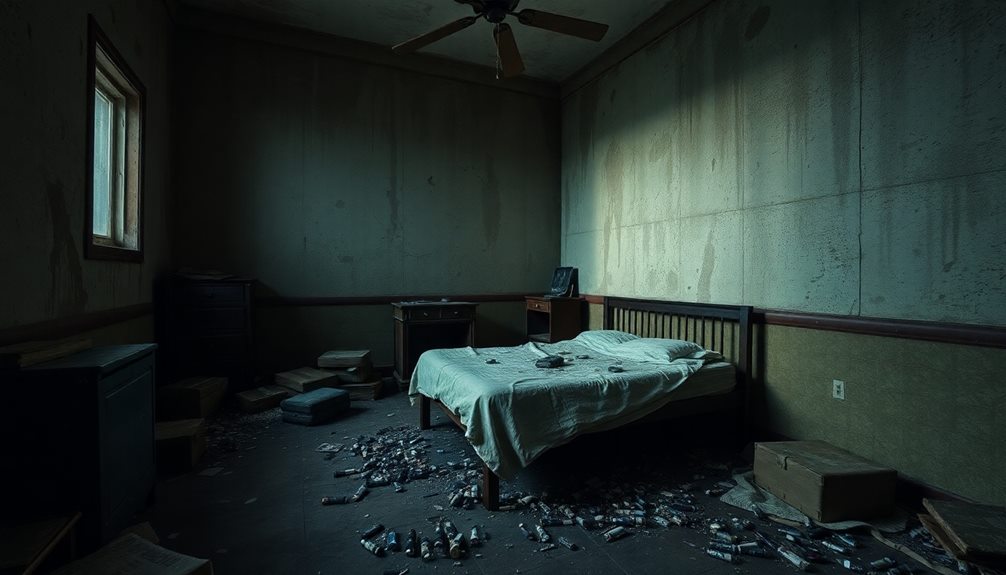
Encountering the smell of a meth house can evoke a range of emotional and cultural associations. For some, the scent might trigger feelings of fear or anxiety, reminding them of stories they've heard about drug use and its impact on neighborhoods. You might picture dark alleys and abandoned homes, where the scent lingers long after the danger has passed.
For others, the smell may bring back memories of loved ones who struggled with addiction. It can remind you of the heartbreak and confusion that often accompany such situations. In many cultures, drugs are seen as a taboo subject, and the smell can symbolize shame or loss, creating a heavy emotional weight.
Conversely, some people may associate the smell with stories of resilience and recovery. They remember how communities come together to support each other, turning the narrative from despair to hope.
It's essential to recognize these emotional connections, as they shape our understanding of the issue. By reflecting on these feelings, you can foster empathy and compassion towards those affected, creating a deeper awareness of the complexities surrounding drug abuse and its consequences.
Health or Safety Considerations
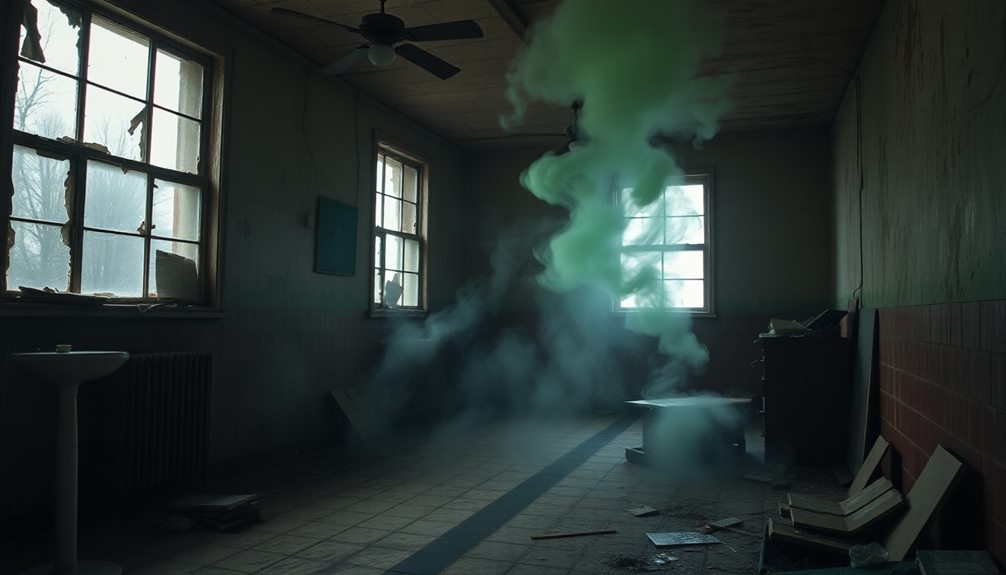
A strong odor often signals potential health and safety risks associated with meth houses. If you notice a strange smell, it's essential to take it seriously. Meth production can release toxic chemicals, which may linger in the air and settle on surfaces. Breathing in these fumes can lead to serious health issues, such as headaches, dizziness, or even respiratory problems.
If you suspect a meth house nearby, it's wise to stay away. The chemicals used in meth production can be harmful, and you don't want to expose yourself or your loved ones to these dangers. Children are particularly vulnerable to these risks, so keeping them safe should be a top priority.
In addition to health risks, meth houses can pose safety hazards. The process of making meth can lead to fires or explosions, especially if improper materials are used.
If you see signs of a meth house—like excessive security, strange smells, or unusual behavior—alert the authorities instead of investigating yourself. It's better to be safe than sorry.
Final Thoughts
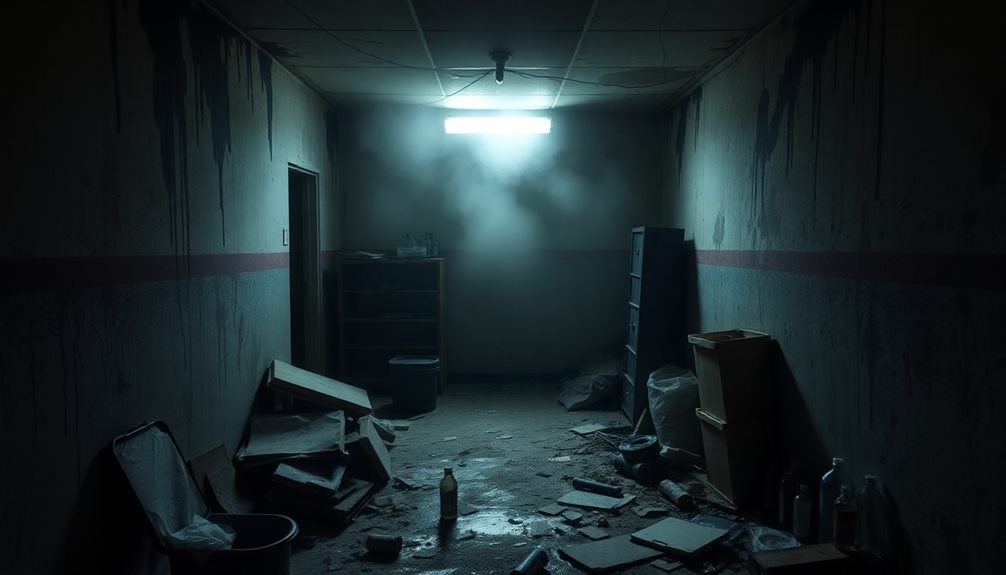
Recognizing the signs of a meth house, including the distinctive smell, is crucial for maintaining your health and safety. If you ever catch a whiff of something that smells like chemicals, ammonia, or cat urine, it's time to take action.
Don't ignore those red flags! Instead, trust your senses and consider reporting your concerns to the authorities.
Living near a meth house can be dangerous, both for your health and your property. It's essential to stay informed about what to look for, so you can protect yourself and your loved ones.
If you suspect something's off, you have every right to investigate further.
Always remember, your safety is the priority. If you're ever in doubt, don't hesitate to reach out for help. Local law enforcement and community resources can provide guidance and support.
Frequently Asked Questions
Can a Meth House Odor Linger After Cleanup?
Yes, a meth house odor can linger even after cleanup. You might notice persistent smells from residue in walls, carpets, or ventilation. Thorough cleaning and professional help are often needed to eliminate these stubborn odors effectively.
How Can I Identify a Meth House by Smell?
You can identify a meth house by smell if you notice a strong, chemical odor resembling ammonia or cat urine. Other signs include sweet, pungent scents or a lingering mustiness that feels unsettling.
Are There Legal Consequences for Being Near a Meth House?
Yes, there can be legal consequences for being near a meth house. If law enforcement finds you in the vicinity, you might face charges related to possession or endangerment, depending on the situation and local laws.
What Should I Do if I Suspect a Meth House Nearby?
If you suspect a meth house nearby, trust your instincts. Document unusual activity, avoid confrontation, and report your concerns to local authorities. Your safety's important, and proper action can help protect your community.
Can Pets Be Affected by the Smell of a Meth House?
Yes, your pets can be affected by the smell of a meth house. They might experience respiratory issues or behavioral changes due to exposure, so it's crucial to keep them away from contaminated areas.
